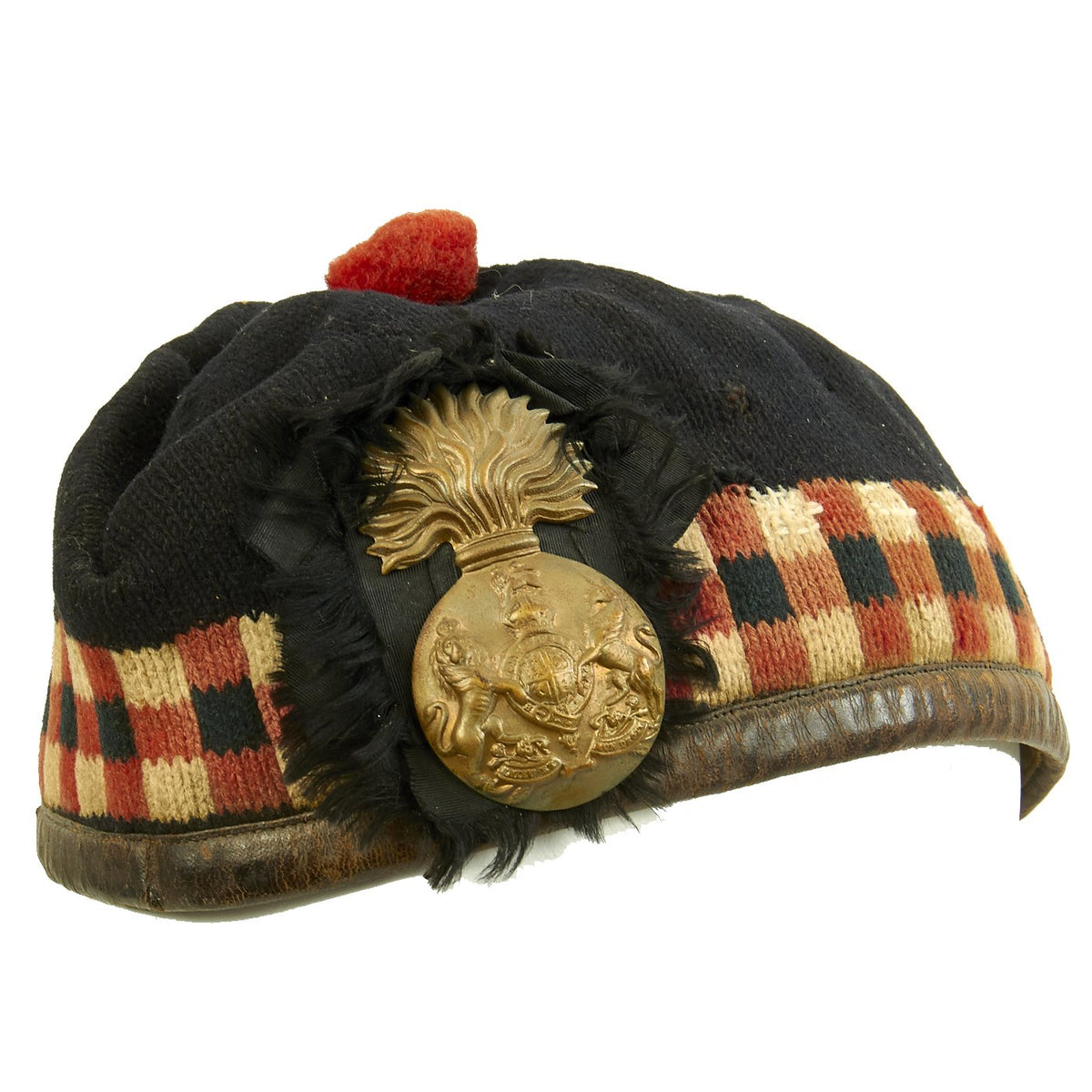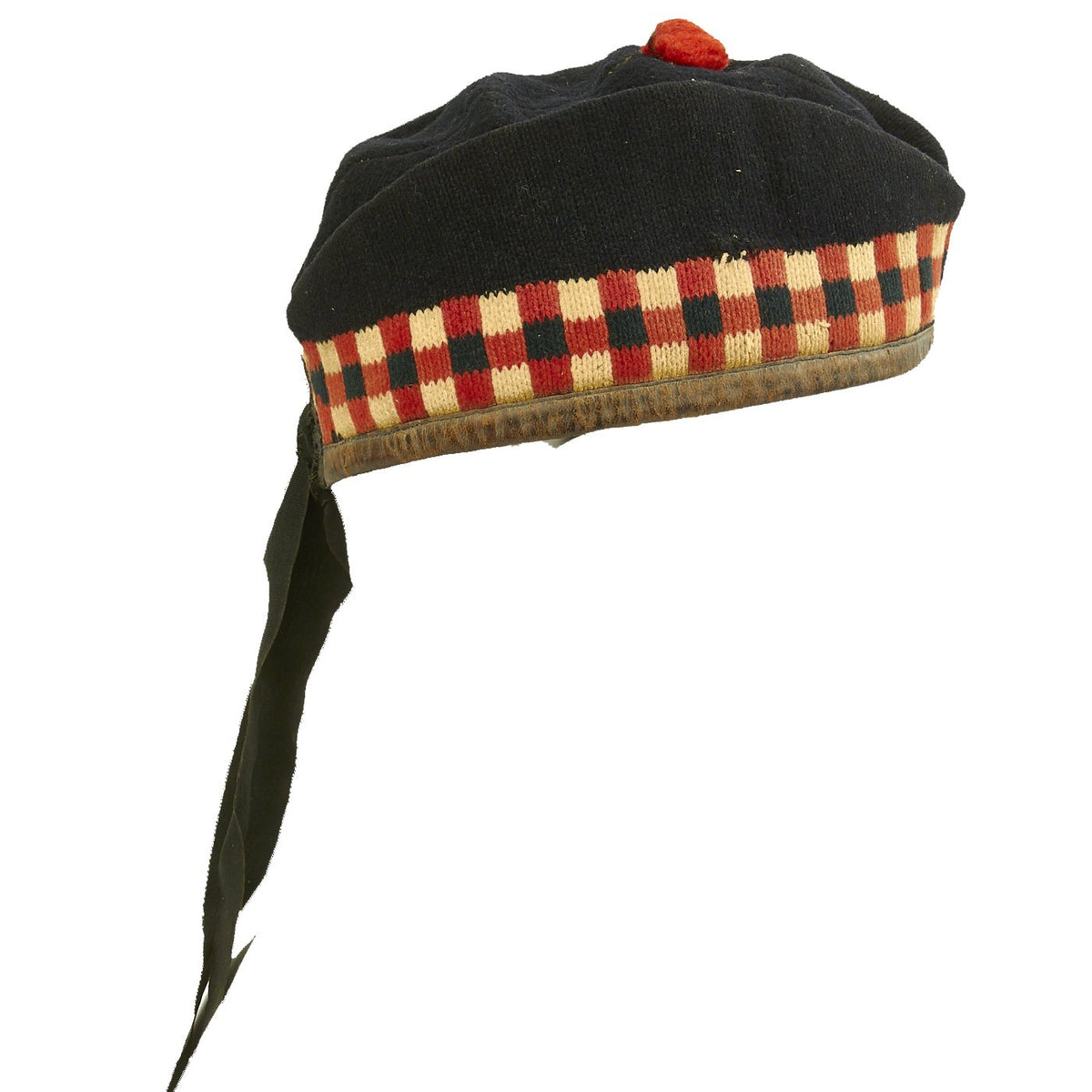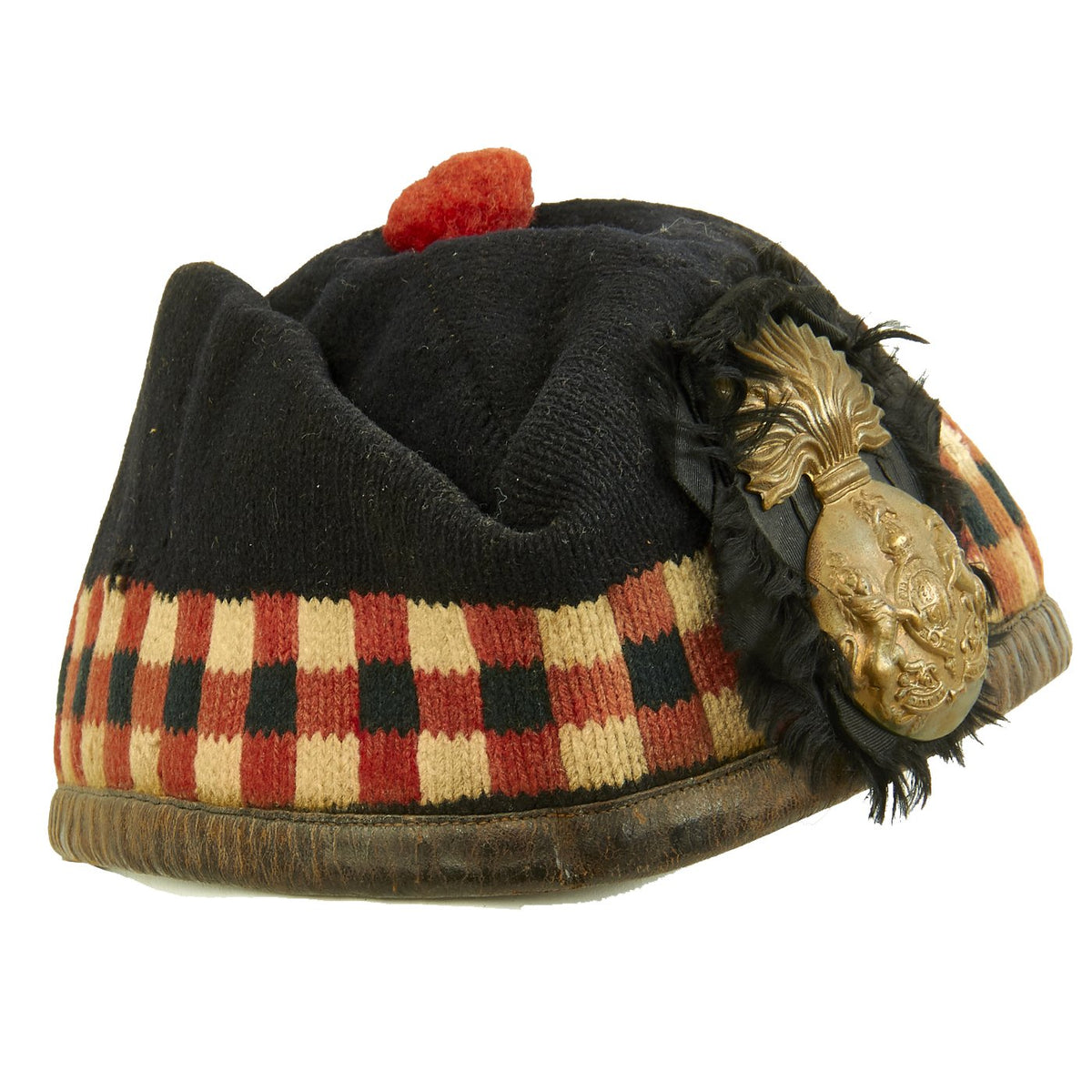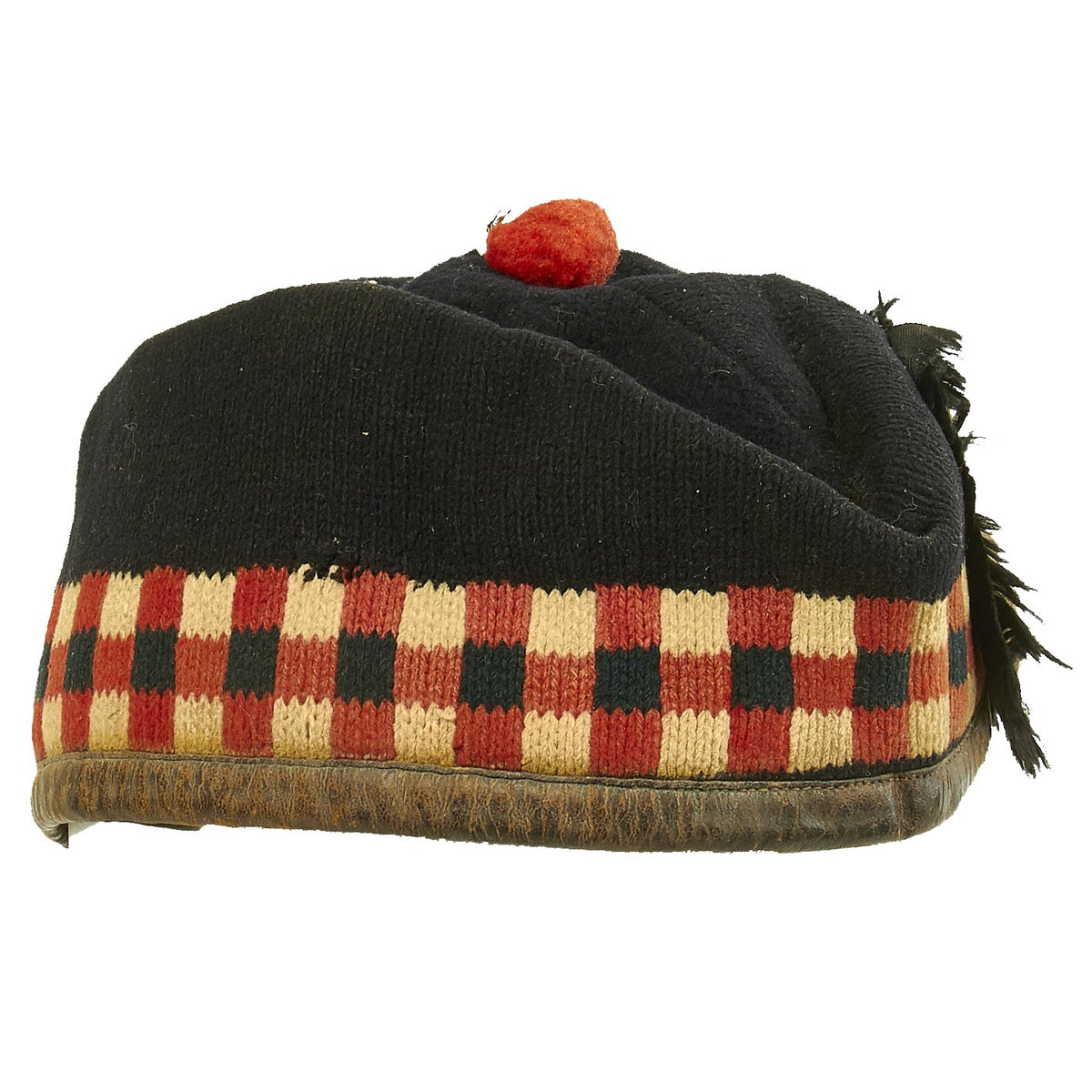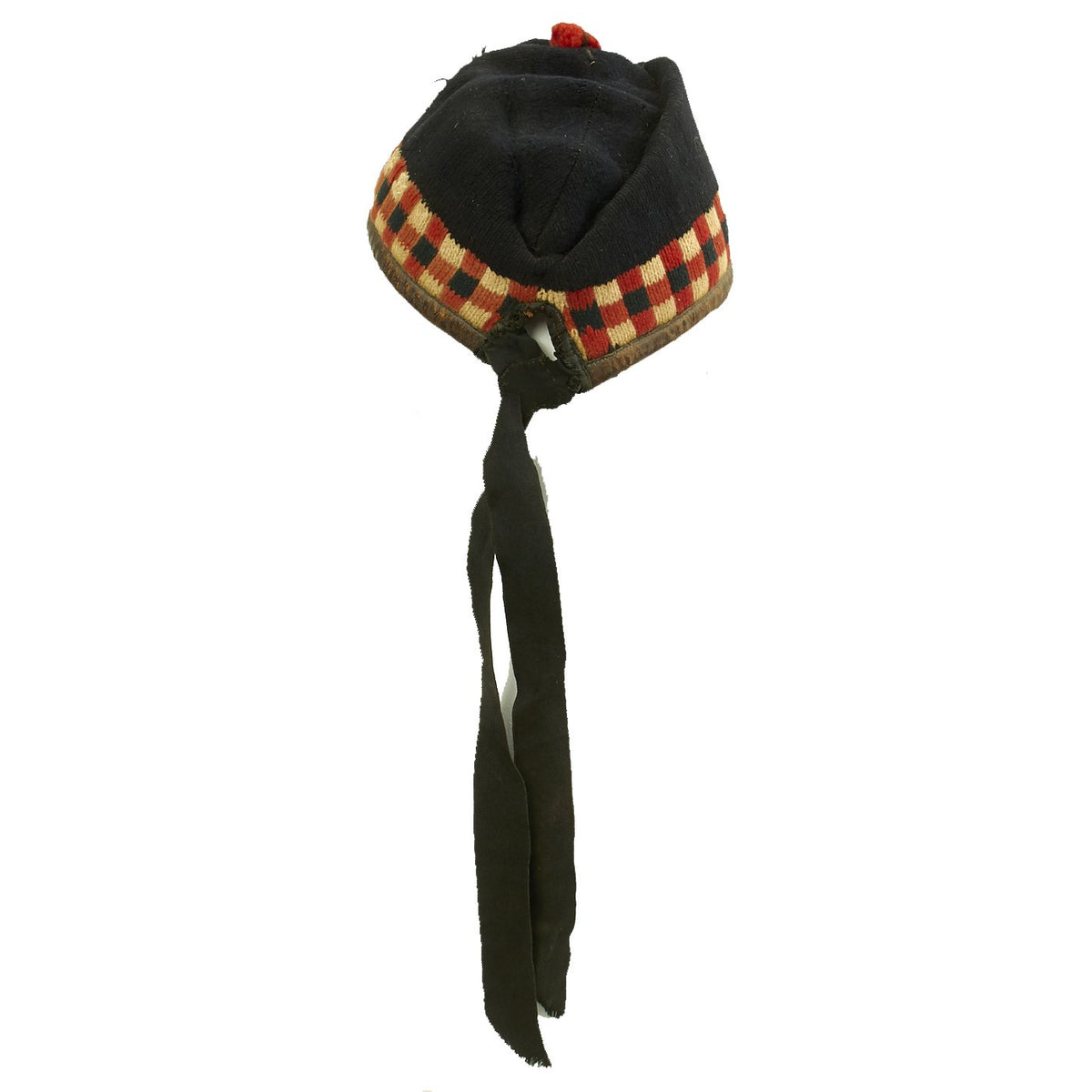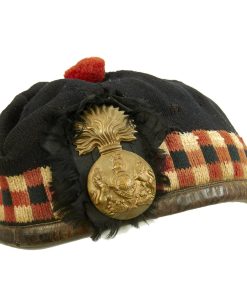Original British WWI Royal Scots Fusiliers Glengarry Side Cap with Regimental Badge Original Items
$ 295,00 $ 118,00
Original Item: Only One Available. The glengarry bonnet, or side cap, is a traditional Scots cap made of thick-milled woollen material, decorated with a toorie (small pom pom) on top, frequently a rosette cockade on the left side, and ribbons hanging behind. It is normally worn as part of Scottish military or civilian Highland dress, either formal or informal, as an alternative to the Balmoral bonnet or tam o’ shanter. For many years it was the standard headgear of all highland regiments in the British Army, except for the Black Watch, who retained a blue Balmoral Bonnet.
This example is in good condition, though it does show wear consistent with long service, both inside and out. The inside liner is split along most of the top, and the side stiffeners can be seen. It has the correct red, white, and black “diced” checkerboard pattern on the sides, with a nice rosette on the left side. Attached to this is a very nice brass “Flaming Bomb” Cap Badge from the Royal Scots Fusiliers regiment, with the correct “King’s Crown” in the badge.
First raised as The Earl of Mar’s Regiment of Foot in 1678, the regiment was then numbered as the 21st Regiment of Foot for several years, before undergoing various name changes, like most regiments with a long history. In 1890, they were redesignated the Royal Scots Fusiliers, and fought under this name during WWI. Many of the battalions saw service during the war, and of distinct note is the 6th (Service) Battalion, which landed at Boulogne-sur-Mer as part of the 27th Brigade in the 9th (Scottish) Division in May 1915 for service on the Western Front. They were put under the command of future prime minister Lieutenant Colonel Winston Churchill commanded the battalion when it was located near Ploegsteert Wood during Spring 1916.
Very attractive, with loads of patina and ready to add to your Scottish collection!
Fast Shipping with Professional Packaging
Thanks to our longstanding association with UPS FedEx DHL, and other major international carriers, we are able to provide a range of shipping options. Our warehouse staff is expertly trained and will wrap your products according to our exact and precise specifications. Prior to shipping, your goods will be thoroughly examined and securely secured. We ship to thousands clients each day across multiple countries. This shows how we're dedicated to be the largest retailer on the internet. Warehouses and distribution centres can be located throughout Europe as well as the USA.
Note: Orders with more than one item will be assigned a processing date depending on the item.
Before shipping before shipping, we'll conduct a thorough inspection of the items you have ordered. Today, the majority of orders will be delivered within 48 hours. The delivery time will be between 3-7 days.
Returns
The stock is dynamic and we cannot completely manage it because multiple stakeholders are involved, including our factory and warehouse. So the actual stock may alter at any time. It's possible that you may not receive your order once the order has been made.
Our policy is valid for a period of 30 days. If you don't receive the product within 30 days, we are not able to issue a refund or an exchange.
You can only return an item if it is unused and in the same state as the day you received it. You must have the item in its original packaging.
Related products
Uncategorized
Uncategorized
Uncategorized
Uncategorized
Armoured Fighting Vehicles of the World: AFVs of World War One (Hardcover Book) New Made Items
Uncategorized
Uncategorized
Uncategorized
Uncategorized
Uncategorized
Uncategorized
Uncategorized
Uncategorized
Armored Burgonet Helmet & Polearm from Scottish Castle Leith Hall Circa 1700 Original Items
Uncategorized
Uncategorized
Uncategorized
Band of Brothers ORIGINAL GERMAN WWII Le. F.H. 18 10.5cm ARTILLERY PIECE Original Items
Uncategorized
